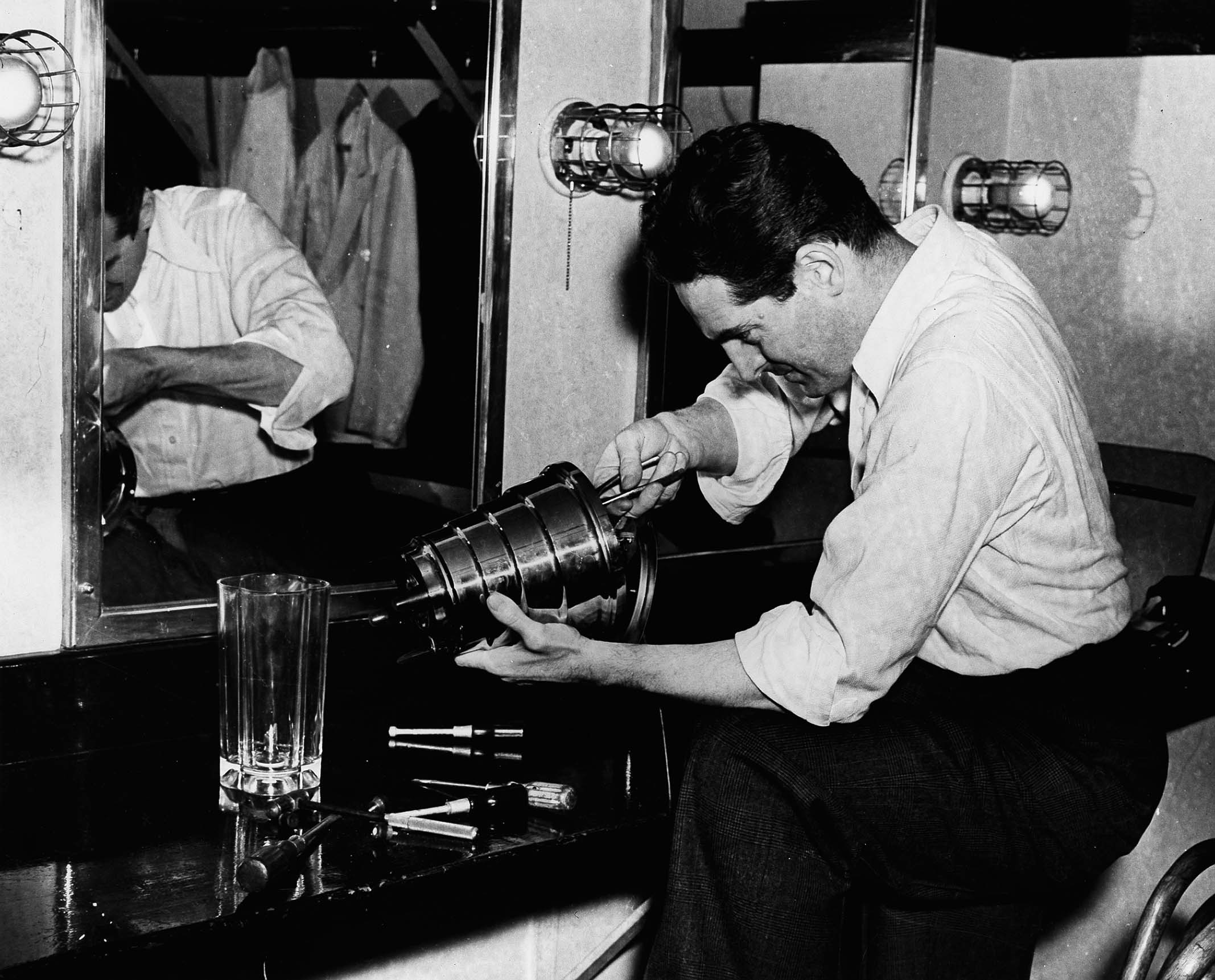

Articles
When Was Dishwasher Invented
Modified: January 20, 2024
Discover the fascinating history and evolution of dishwashers in this informative article. Learn about the invention of the dishwasher and how it revolutionized modern kitchens.
(Many of the links in this article redirect to a specific reviewed product. Your purchase of these products through affiliate links helps to generate commission for Storables.com, at no extra cost. Learn more)
Introduction
In today’s modern world, where convenience and efficiency are highly valued, one household appliance that has become an indispensable part of our daily lives is the dishwasher. This remarkable invention has revolutionized the way we clean our dishes, saving us time and effort. But have you ever wondered when the dishwasher was first invented?
The concept of mechanical dishwashing can be traced back to ancient times, with early civilizations using a variety of methods to clean their dining utensils. However, it was not until the late 19th century that the first mechanical dishwasher was created, setting the stage for a new era of domestic convenience.
In this article, we will explore the fascinating history of the dishwasher, from its humble beginnings to the technologically advanced appliance we know today.
So sit back, relax, and embark on a journey through time as we delve into the intriguing story of how the dishwasher came to be.
Key Takeaways:
- The dishwasher, invented in the late 19th century by Josephine Cochrane, revolutionized dishwashing by automating the process and providing consistent, reliable results, paving the way for future advancements in dishwasher technology.
- Technological advancements in dishwasher design have led to energy-efficient, water-saving, and smart features, transforming dishwashers into powerful, efficient, and customizable appliances that simplify our daily lives.
Read more: When Was The Bathtub Invented
Early Attempts at Mechanical Dishwashing
Long before the invention of the modern dishwasher, people employed various methods to clean their dishes. In ancient civilizations, such as the Egyptians and Greeks, individuals would use sand, ash, or even animal fat to scrub their utensils. Later, during the Middle Ages, wooden scrubbing boards known as “battledores” were commonly used.
One notable early attempt at mechanical dishwashing came in the mid-18th century with the invention of the “scullery maid.” This contraption consisted of a wooden box with compartments for plates, which would be placed on racks. The racks were then manually turned, using a handle outside the box, causing water to flow over the dishes.
While the scullery maid was a step towards automation, the process was labor-intensive and inefficient. As time went on, inventors and innovators sought to create a more effective and efficient method of dishwashing.
In the early 19th century, various patents were filed for mechanical dishwashing devices. One such invention was the rotary dishwasher, which consisted of a hand-cranked wheel with compartments for plates. As the wheel turned, the plates would be immersed in water and scrubbed by brushes.
Despite these early attempts, mechanical dishwashing still had a long way to go. Many of these early devices were unreliable, often resulting in broken or chipped dishes. It was clear that a more reliable and efficient solution was needed.
Fortunately, this solution would come in the form of an ingenious woman named Josephine Cochrane, who would go on to become known as the mother of the modern dishwasher.
Josephine Cochrane: The Mother of the Modern Dishwasher
In the late 19th century, Josephine Cochrane, a wealthy socialite from Illinois, found herself frustrated with the way her dishes were being handled by the servants. She noticed that they were often mishandled and damaged during the dishwashing process. Determined to find a solution, she took matters into her own hands.
In 1886, Josephine began working on a design for a machine that could effectively clean dishes without causing any damage. Her vision was to create a device that could handle delicate china and glassware while efficiently removing food particles and stains.
After years of experimentation and refinement, Josephine Cochrane finally unveiled her invention in 1889. Her dishwasher consisted of a copper boiler, wire compartments for holding the dishes, and a motor that pumped a mixture of hot soapy water over the dishes to clean them.
What set Josephine’s dishwasher apart from previous attempts was its practicality and efficiency. The wire compartments securely held the dishes, preventing them from shifting or breaking during the dishwashing process. Additionally, the high-pressure water spray ensured a thorough and effective clean.
Recognizing the potential of her invention, Josephine Cochrane founded the Garis-Cochrane Manufacturing Company and began producing her dishwashers commercially. They were initially targeted towards hotels and restaurants, where the machines found great success.
Word quickly spread about Josephine’s dishwasher, and her invention attracted attention at the 1893 World’s Columbian Exposition in Chicago. The dishwasher won the highest award in its category, solidifying its place in history as a groundbreaking invention.
Josephine Cochrane’s dishwasher marked the beginning of a new era in dishwashing. By automating the process and providing consistent and reliable results, her invention not only revolutionized the way we cleaned our dishes but also paved the way for future advancements in dishwasher technology.
Though Josephine Cochrane’s dishwasher was primarily used in commercial settings initially, it wouldn’t be long before it found its way into the homes of everyday people.
The First Commercial Dishwasher
After the success of Josephine Cochrane’s dishwasher at the World’s Columbian Exposition, it became increasingly clear that there was a demand for this innovative appliance in commercial establishments. As a result, the first commercial dishwasher was introduced to the market.
In 1903, the Hobart Manufacturing Company, known today as Hobart Corporation, released the first commercially successful dishwasher. This dishwasher was designed specifically for use in restaurants and hotels, where the demand for efficient dishwashing was high.
The Hobart dishwasher featured a conveyor belt system that carried the dirty dishes through several stages of the cleaning process. The dishes would first pass through a pre-rinse cycle, followed by the main wash and final rinse cycles. The machine utilized a combination of high-pressure water sprays, hot water, and detergent to ensure a thorough clean.
The introduction of the commercial dishwasher was a game-changer for the food service industry. It greatly reduced the amount of time and effort needed to clean dishes, allowing restaurants to increase their efficiency and focus on providing quality food and service to their customers.
As the demand for dishwashers continued to grow, manufacturers like Hobart began to refine and improve their designs. Over time, commercial dishwashers became more advanced, incorporating features such as temperature control, automatic detergent dispensers, and adjustable water pressure.
Today, commercial dishwashers are an integral part of the food service industry, with restaurants, cafes, hotels, and catering businesses relying on these powerful machines to handle their high-volume dishwashing needs.
While the commercial dishwasher was a significant development, it wouldn’t be long before dishwashers found their way into residential kitchens.
The first patent for a mechanical dishwasher was filed in 1850 by Joel Houghton, but it was not very effective. The first practical dishwasher was invented by Josephine Cochrane in 1886.
Dishwashers in the 20th Century
As the 20th century progressed, dishwashers began to make their way into residential kitchens, transforming the way households approached dishwashing. What started as a luxury item for the wealthy gradually became more accessible to the general population, sparking a revolution in home appliance technology.
In the early 1900s, dishwashers were primarily seen as a convenience for the upper class. These early models were often large, expensive, and required professional installation. However, advancements in technology and manufacturing techniques soon made dishwashers more affordable and compact.
It wasn’t until the 1950s and 1960s that dishwashers truly gained popularity among the masses. Manufacturers like General Electric, Maytag, and Whirlpool introduced smaller, more affordable dishwashers that could fit comfortably in the average kitchen.
During this period, dishwashers also became more efficient and user-friendly. Features such as multiple wash cycles, dishwasher-safe racks, and built-in heating elements for drying dishes were introduced. These advancements made dishwashing easier and more convenient for homeowners.
In the late 1960s and early 1970s, the energy crisis sparked an increased demand for energy-saving appliances. To meet this demand, manufacturers began developing more energy-efficient dishwashers. This led to the introduction of features like “economy” or “energy-saving” modes, which reduced water and energy consumption while still providing effective cleaning.
Throughout the rest of the 20th century, dishwashers continued to evolve and improve. Manufacturers focused on enhancing the performance, efficiency, and design of dishwashers, creating options that fit seamlessly into any kitchen décor.
Technological advancements, such as the introduction of electronic control panels, improved water filtration systems, and sensors for load detection, further enhanced the functionality and efficiency of dishwashers.
By the end of the 20th century, dishwashers had become a staple in many households. They had transformed from a luxury item to an essential appliance, saving time and effort for millions of people around the world.
With the dawn of the 21st century, dishwashers continued to advance in terms of technology, energy efficiency, and design. Today, we enjoy a wide range of dishwasher models, offering various features and customization options to cater to our individual needs and preferences.
Read more: When Was The Freezer Invented
Technological Advancements in Dishwasher Design
Over the years, dishwasher design has undergone significant technological advancements, making these appliances more efficient, convenient, and capable of delivering superior cleaning results. Let’s explore some of the notable innovations in dishwasher technology.
1. Energy Efficiency: With a growing focus on sustainability and reducing energy consumption, manufacturers have developed energy-efficient dishwashers. These models incorporate features such as improved insulation, advanced water circulation systems, and sensor technology to optimize water and energy usage. Energy Star certification is now a common standard, ensuring that dishwashers meet specific energy efficiency guidelines.
2. Water Conservation: Water-saving technologies have also become a priority in dishwasher design. Dishwashers now feature water sensors that can detect the level of dirt and adjust the water usage accordingly. Additionally, some models incorporate air-based cleaning techniques, using less water while still achieving excellent cleaning results.
3. Advanced Wash Cycles: Dishwashers now offer a variety of wash cycles to meet different cleaning needs. These cycles include options like heavy-duty, normal, quick wash, sanitize, and eco-friendly. This allows users to customize their dishwasher settings based on the type and condition of the dishes being cleaned.
4. Noise Reduction: Noise levels during the dishwasher cycle have significantly decreased thanks to advancements in motor and pump technology. Manufacturers have incorporated noise dampening materials and optimized the machine’s construction to minimize operational noise, allowing for a quieter and more peaceful kitchen environment.
5. Smart Technology: The rise of smart home technology has made its way into dishwashers as well. Some modern dishwashers feature Wi-Fi connectivity, allowing users to control and monitor their appliances remotely using their smartphones. This technology enables users to start or stop the dishwasher, adjust settings, and receive notifications about the cleaning process.
6. Improved Racks and Loading Mechanisms: Dishwashers now come with adjustable and flexible racks, providing more convenience and versatility in loading. Innovations like foldable tines, adjustable shelves, and specialized compartments for silverware and utensils make it easier to accommodate various dish sizes and shapes, optimizing space utilization.
7. Enhanced Cleaning Performance: Advanced spray arms, multi-level water filtration systems, and optimized water pressure mechanisms have led to improved cleaning performance. Additionally, features like steam cleaning and high-temperature wash options ensure thorough sanitization, effectively removing stubborn stains, grease, and bacteria.
8. Sleek and Modern Designs: In terms of aesthetics, dishwashers have become more than just functional appliances. Manufacturers now offer sleek, stylish designs with various finishes to complement different kitchen styles. Built-in and panel-ready options allow dishwashers to seamlessly blend in with cabinetry, creating a cohesive and visually appealing kitchen space.
These technological advancements have transformed dishwashers into powerful, efficient, and customizable appliances that simplify our daily lives. As technology continues to evolve, we can expect even more innovative features in future dishwasher designs.
Environmental Impact of Dishwashers
As we strive to live more sustainably and reduce our carbon footprint, it is important to consider the environmental impact of household appliances, including dishwashers. While dishwashers offer convenience and efficiency in cleaning our dishes, they also consume energy and water resources. Let’s explore the environmental implications of using dishwashers.
1. Water Consumption: Dishwashers require a significant amount of water to operate. However, modern dishwashers are designed to be more water-efficient compared to washing dishes by hand. Energy-efficient dishwashers utilize water sensors and spray technologies to optimize water usage, ensuring that only the necessary amount of water is used during each cycle. By using a dishwasher, you can actually conserve water compared to manually washing dishes, especially when running full loads.
2. Energy Usage: Dishwashers consume energy for heating water, running the motor, and operating other components. However, advancements in dishwasher technology have led to the development of energy-efficient models. Energy Star-certified dishwashers are designed to use less electricity by incorporating features like improved insulation, efficient water heating, and smart sensors that optimize energy consumption. Choosing an energy-efficient dishwasher can significantly reduce your household’s energy usage and environmental impact.
3. Detergent and Chemicals: Dishwashers rely on detergent to effectively clean dishes. While detergent is necessary for removing food particles and stains, it is essential to choose environmentally friendly options. Look for dishwasher detergents that are phosphate-free, biodegradable, and labeled as eco-friendly. These detergents are formulated to minimize environmental harm and are safer for aquatic ecosystems when the wastewater from dishwashing reaches water bodies.
4. Carbon Emissions: The energy consumed by dishwashers comes primarily from electricity, which may be generated using fossil fuels. The carbon emissions associated with electricity production contribute to climate change and air pollution. To reduce the carbon footprint of using a dishwasher, consider using renewable energy sources, such as solar panels, to power your appliances. Alternatively, choose energy-efficient models and take advantage of energy-saving features, such as delay start timers and eco-friendly wash cycles.
5. Long-Term Sustainability: The overall sustainability of using a dishwasher depends on various factors, including the dishwasher’s lifespan, maintenance, and disposal. Investing in a high-quality dishwasher with a longer lifespan can help reduce the environmental impact associated with frequent appliance replacements. Proper maintenance, such as cleaning filters and regularly inspecting the dishwasher for leaks, can improve its efficiency and extend its lifespan. When it comes time to dispose of an old dishwasher, be sure to do so responsibly by recycling or donating it to minimize waste and promote recycling efforts.
Ultimately, the environmental impact of using a dishwasher can be minimized by choosing energy-efficient models, using eco-friendly detergents, optimizing water and energy usage, and incorporating sustainable practices in the maintenance and disposal of the appliance.
By being mindful of our environmental impact and making conscious choices, we can enjoy the convenience of dishwashers while minimizing their ecological footprint.
Conclusion
The invention and evolution of the dishwasher have revolutionized the way we approach dishwashing, offering convenience, efficiency, and improved cleaning results. From the early mechanical attempts to the modern technologically advanced appliances, dishwashers have come a long way.
We have explored the fascinating history of the dishwasher, from the early attempts at mechanical dishwashing to the groundbreaking invention by Josephine Cochrane, known as the mother of the modern dishwasher. Her invention paved the way for the commercial dishwasher, which found its place in restaurants and hotels, changing the game for the food service industry.
Throughout the 20th century, dishwashers became more accessible to households, fueling a demand for smaller, more affordable models. Technological advancements, such as energy-efficient designs, water-saving mechanisms, smart features, and enhanced cleaning performance, have further improved the functionality and sustainability of dishwashers.
However, it is important to consider the environmental impact of dishwasher usage. Water consumption, energy usage, detergent choice, and carbon emissions are factors that contribute to the ecological footprint of dishwashers. By selecting energy-efficient models, using eco-friendly detergents, conserving water, and adopting sustainable practices, we can minimize the environmental impact of using dishwashers.
In conclusion, the dishwasher has transformed dishwashing from a labor-intensive chore to a time-saving and convenient task. Its evolution has been driven by technological advancements, sustainability considerations, and the changing needs of households. By balancing the benefits of dishwashers with environmentally conscious practices, we can enjoy the convenience they offer while minimizing our ecological footprint.
As we look to the future, we can expect continued innovation and advancements in dishwasher design to further enhance their efficiency, performance, and sustainability. Dishwashers will continue to play a vital role in households and commercial establishments, simplifying our lives and allowing us to focus on more important things than washing dishes.
Frequently Asked Questions about When Was Dishwasher Invented
Was this page helpful?
At Storables.com, we guarantee accurate and reliable information. Our content, validated by Expert Board Contributors, is crafted following stringent Editorial Policies. We're committed to providing you with well-researched, expert-backed insights for all your informational needs.















0 thoughts on “When Was Dishwasher Invented”